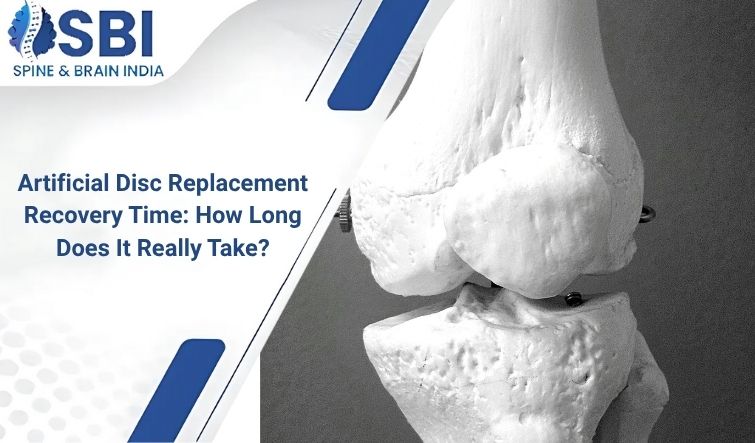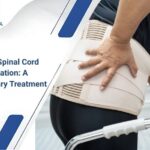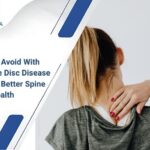If you are considering Artificial Disc Replacement (ADR) to address chronic, debilitating neck or back pain, you are on the threshold of a decision that can truly restore your quality of life. Unlike traditional spinal fusion, which locks spinal segments together, ADR is designed to eliminate pain while preserving your natural motion. This promise of preserved mobility is incredibly appealing, but it quickly leads to the most common and anxious question: artificial disc replacement recovery time.
It is important to understand upfront that “recovery time” is not a fixed, universal number. It is a highly personalized journey, heavily influenced by your own body, your commitment to rehabilitation, and the skill of your surgical team. However, we can break down this recovery into clear, navigable phases, giving you realistic expectations for what it truly takes to return to a full, active life. The good news is that for many, the initial phase of artificial disc replacement recovery time is often faster and less restrictive than that following a fusion procedure.
1. Defining the Advantage: Why ADR Recovery is Different
Before diving into the timeline, it is essential to understand why the recovery trajectory for ADR differs from its predecessor, spinal fusion (ACDF or Lumbar Fusion).
- Fusion’s Restriction: Spinal fusion surgery requires the surgeon to completely remove the problematic disc and replace it with a bone graft, forcing the two vertebrae to grow into a single, immobile unit. The artificial disc replacement recovery time for fusion is dominated by the six-to-twelve-month period required for the bone to fully knit and fuse, during which the patient must strictly limit movement to ensure healing.
- ADR’s Freedom: In an Artificial Disc Replacement, the damaged disc is replaced with a mobile prosthetic made of metal and plastic (or all-metal) components. Since there is no bone fusion required, the structural integrity of the spine is restored almost immediately by the implant itself. The recovery is primarily focused on healing the surgical site and the surrounding soft tissues, not waiting for bone to grow. This fundamental difference shortens the critical early phase of artificial disc replacement recovery time.
Because of this immediate stability, the goal shifts from immobilization to mobilization, which sets the stage for a significantly quicker return to function.
2. The Phases of Artificial Disc Replacement Recovery Time
We can break down the journey through artificial disc replacement recovery time into four distinct phases, each with its own goals, limitations, and milestones.
Phase 1: The Immediate Post-Operative Period (Day 1 – Week 2)
This initial phase is centered on acute pain management and safely returning home.
- Hospital Stay (1-3 Days): Most ADR procedures—both cervical (neck) and lumbar (lower back)—require a brief hospital stay. The day after surgery, the primary goal is mobilization. You will be encouraged to stand up and walk with assistance. This early, gentle movement is crucial for circulation, healing, and minimizing stiffness.
- Initial Pain Management: Acute pain is managed with a combination of intravenous (IV) and oral pain medications. The pain you feel is primarily from the incision site and the muscle dissection required to access the spine, not usually the disc space itself.
- Initial Restrictions (The BLT Rule): To protect the soft tissues and the new implant, your surgeon will enforce strict limitations: No Bending, No Lifting (usually more than 5-10 pounds—think a gallon of milk), and No Twisting (the “BLT” rule).
- Key Milestone: Successfully walking independently and managing pain with oral medication. Most patients are cleared to go home after the first 48-72 hours.
Phase 2: Early Home Recovery and Return to Basic Life (Weeks 2 – 6)
This phase is about healing the incision and re-establishing daily routines. This is a critical period for setting a positive trajectory for your overall artificial disc replacement recovery time.
- Wound Care and Incision Healing: The external incision (usually a small horizontal cut on the front of the neck or abdomen) should be mostly healed by the end of this period.
- Increased Activity: Walking remains the best exercise. You should gradually increase the distance and frequency of your walks. Most patients find their general stamina returning steadily.
- Driving: For cervical ADR, driving is often permitted once the patient is off narcotic pain medication and has regained the ability to turn their neck sufficiently to check blind spots, typically around the 2-4 week mark. For lumbar ADR, this may take slightly longer.
- Physical Therapy (PT) Begins: You may begin a very gentle, passive physical therapy program focused on soft tissue mobilization and pain-free range of motion. The goal is to avoid stiffness without stressing the spine.
- Key Milestone: Returning to light desk work or office jobs that require minimal lifting or strain. The dependence on strong pain medication should be entirely eliminated.
Phase 3: Active Rehabilitation and Building Strength (Months 2 – 4)
This phase represents the core of the rehabilitation effort and is where the preservation of motion truly pays off. This is the most active stage of artificial disc replacement recovery time.
- Intensive, Structured Physical Therapy: Your PT program becomes more challenging, shifting focus to active strengthening, particularly of the core muscles (abdomen, back, and hips). A strong core is vital for stabilizing the spine and protecting the new disc.
- Restoration of Flexibility: With a new mobile implant, the focus is on safely and gradually maximizing the new range of motion. Unlike fusion, where movement is actively discouraged, ADR encourages motion to keep the implant and surrounding joints healthy.
- Easing Restrictions: Lifting limits are gradually increased based on the PT’s assessment and the surgeon’s guidance, often up to 15-20 pounds. You can start performing low-impact exercises like stationary cycling or water aerobics.
- Key Milestone: Returning to full-time work, engaging in most household chores, and regaining the ability to perform activities that require moderate spinal movement.
Curious About Recovery After Artificial Disc Replacement?
Recovery time varies for every patient — expert guidance ensures faster healing and lasting results. Consult Dr. Arun Saroha, a leading spine surgeon with 25+ years of experience in minimally invasive spine surgeries and post-surgical rehabilitation.
Schedule Your Recovery ConsultationPhase 4: Full Functional Recovery and Long-Term Integration (Months 4 – 6+)
While the initial artificial disc replacement recovery time often concludes by the 6-month mark, this phase is about long-term success and integration.
- Return to Activity: By 4 to 6 months, most patients can return to nearly all pre-surgery activities, including moderate sports like golf, tennis, swimming, and hiking. High-impact sports are often still advised against, but the limitations are far less severe than those following fusion.
- Spine Health Commitment: The focus shifts to a lifelong commitment to core stability and fitness. The success of the ADR depends on maintaining strong surrounding musculature.
- The Full Result: It is important to note that while functional recovery is fast, complete nerve and soft tissue healing, and the full realization of the implant’s benefits, can take up to a full year.
3. Factors That Individualize Artificial Disc Replacement Recovery Time
While the phases provide a general map, your journey will be unique. Several factors can significantly compress or extend your artificial disc replacement recovery time:
- Pre-Existing Health and Age: Younger, healthier patients with fewer comorbidities (like diabetes or obesity) typically heal faster. A strong nutritional status is also vital for tissue repair.
- Type of Surgery: Lumbar ADR often has a slightly longer recovery than cervical ADR, primarily due to the greater weight and stress placed on the lower back, requiring a slower progression back to full activity.
- Number of Levels Treated: A multi-level ADR (replacing two or more discs) will inherently require a more conservative and extended artificial disc replacement recovery time compared to a single-level procedure.
- Adherence to Physical Therapy (PT): This is arguably the most critical variable within your control. Patients who skip or half-heartedly approach PT sessions risk stiffness, weakness, and a prolonged recovery. PT is the engine that drives your functional return.
- Pre-Operative Pain and Dysfunction: Patients who lived with severe pain for a long time often experience muscle weakness, nerve sensitization, and compensatory movement patterns that take longer to correct during rehabilitation.
The decision to undergo ADR is a decision to invest in your future mobility and long-term spine health. The success of the procedure, and the speed of your return to a pain-free life, rests heavily on choosing an expert surgeon and committing fully to the rehabilitation process. A specialist is necessary not only for the surgery itself but for tailoring the recovery program to your specific needs.
Dr. Arun Saroha is a renowned neurosurgeon with vast experience in advanced spinal procedures, including the complex techniques required for Artificial Disc Replacement. His expertise in both neurosurgery and spinal health ensures that every patient receives a personalized surgical plan followed by a meticulous and customized rehabilitation strategy. Choosing a surgeon like Dr. Arun Saroha gives you the best chance of minimizing your artificial disc replacement recovery time and achieving lasting relief and preserved motion.
Curious About Recovery After Artificial Disc Replacement?
Recovery time varies for every patient — expert guidance ensures faster healing and lasting results. Consult Dr. Arun Saroha, a leading spine surgeon with 25+ years of experience in minimally invasive spine surgeries and post-surgical rehabilitation.
Schedule Your Recovery ConsultationFrequently Asked Questions (FAQs)
Is a neck brace required after cervical Artificial Disc Replacement (ADR)?
Unlike many fusion surgeries, a hard neck brace or collar is rarely required after cervical ADR. Surgeons typically prefer patients to remain mobile to allow the new disc to articulate. Some may recommend a soft collar for comfort for a few days, but long-term immobilization is generally avoided.
When can I start exercising again after ADR?
Walking can begin on day one. Low-impact activities like swimming and stationary cycling can often be introduced around the 6-8 week mark. High-impact or heavy resistance training is generally delayed until the 4-6 month post-operative period, and sometimes longer, based on your specific surgeon’s guidance.
Will I still have pain immediately after the surgery?
Yes, you will have incisional pain and muscular soreness, which is managed with medication. The nerve pain that prompted the surgery, however, often resolves quickly. If the surgery successfully decompressed the nerve, the sharp, shooting pain should be gone, leaving only surgical discomfort.
How soon after the procedure can I return to a desk job?
Most patients with desk jobs can return to work within 2 to 4 weeks after the surgery. Since a desk job involves minimal physical strain, the primary limitation is managing comfort and pain levels during prolonged sitting.
What is the single most important factor for a successful recovery?
The most important factor within your control is strict adherence to the artificial disc replacement recovery time guidelines and the physical therapy protocol. Consistent, correct execution of the exercises is vital for stabilizing the spine and maximizing the range of motion of the new implant.
Does ADR help prevent future problems in adjacent spine segments?
The core benefit of Artificial Disc Replacement is the potential to reduce the risk of Adjacent Segment Disease (ASD), which is a common problem after spinal fusion. By preserving motion at the operative level, ADR aims to prevent excessive stress from being transferred to the discs immediately above and below the surgical site, potentially providing a longer-term solution for spine health.










